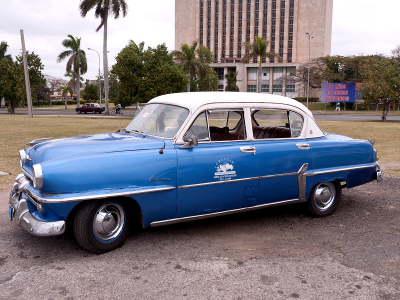Plymouth Automobile
Category: Automotive History

History and facts about Plymouth Cars. The Plymouth Automobile was a brand name of vehicles based in the United States, manufactured by the Chrysler Corporation and its descendant Daimler Chrysler. The vehicle first appeared during 1928 in the United States and was ceased during 2001.
Plymouth Automobile History and Information
The Plymouth vehicle was first introduced on the 7th of July 1928 by the Chrysler Corporation. The name Plymouth was chosen by Joe Frazer, who was the automobile business executive of America, owing to the fame of the twine among cultivators for tying up different items. This vehicle was the first entry in the low-cost field, which at the time was previously dominated by Ford and Chevrolet. Plymouth cars were, in fact, priced somewhat higher than their rivalry, but it was provided with all standard features.
The foundations of Plymouth can be traced back to the Maxwell vehicle. When Walter P. Chrysler, the creator of the Chrysler Corporation, who took over as part of the parcel of the distressed Maxwell-Chalmers automobile company during the early 1920s. Subsequent to the use of the facilities of the company to assist create and instigate the Chrysler sedan during 1924, he determined to produce a lower-priced companion sedan. So for the 1926 model, the Maxwell was redesigned and re-badged as the little-end Chrysler-52 model. During 1928, the Chrysler-52 model was once again remodeled to construct the Model Q. The "Chrysler" section of the nameplate was removed during 1929 with the launch of the Plymouth Model U.
Starting in 1930, Plymouth cars were sold by all three Chrysler automotive divisions, such as DeSoto, Chrysler and Dodge. The sales were an intense spot during this depressing automotive era. Then, during 1931, Plymouth increased to the number three position among all sedans, and during 1931, the business introduced the Model PA.
During April 1933, the chassis of Model DP of the Dodge division was put under the Plymouth PC body with DP obverse fenders, cover, and radiator covering. The title of the model was sophisticated to PD and the vehicle was promoted with the name, the DeLuxe 1933 Plymouth.
In 1939, Plymouth manufactured 417,528 automobiles, of which 5,967 were the 2-door convertible coupes with grumbling seats. The 1939 model convertible sedan was highly featured at Chrysler's show at the New York World's Exhibition in 1939, publicized as the first mass-manufacture convertible with a power folding crown.
Plymouth approximately went beyond Ford during 1940 and 1941, and considered as the second most admired make of vehicles in the United States. Until 1956, Plymouth automobiles were recognized for their affordability, durability, and engineering.
During 1957, the innovative Forward Look design idea of Virgil Exner, an automobile designer for many American businesses, promoted the 1960 manufactured vehicles with more sophisticated styling than Ford and Chevrolet.
Even though the sales of Plymouth cars suffered due to the quality control setbacks and overloads of Exner-fashioned models during the early 1960s, people procured sufficient vehicles to keep the division lucrative. During the early 1961, the Valiant compact turned into a Plymouth, further increased the sales. Under the idea that Chevrolet was about to cut back its 1962 model cars, Chrysler launched a considerably small standard Plymouth car for the year 1962.
For the 1964 model year, Plymouth received one more major redesign, with an innovative slant back roofline for hardtop vehicles that would establish an extremely admired one. Several fanatics consider the 1964 model cars to be the most beautiful of the early 1960s Plymouth cars.
For the 1965 model year, Plymouth received an entirely innovative platform such that all large Plymouth cars became Fury cars for the 1965 model year.
As the craze of the performance cars of the late 1960s and 1970s swept over the United States, Plymouth contributed to a great extent, and in addition, manufactured some of the most unforgettable muscle vehicles in the automotive history of America.
Nearly all Plymouth model cars offered from the last part of the 1970s were badge-engineered variants of Mitsubishi or Dodge models. Plymouth had misplaced much of its identity by the 1990s, as its models sustained to overlap in prices and features with Eagle and Dodge cars.
The last fresh model car sold under the Plymouth porch was the second generation Neon for the period 2000–2001.
All Facts are based on our research, always check lookseek facts in case of any errors. Lookseek is not responsible for any mistakes in this article.

 Back To Category Automotive History
Back To Category Automotive History